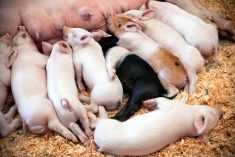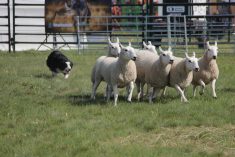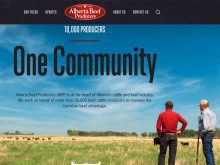RED DEER, Alta. – If the Alberta government wants its livestock industry to expand, it must establish consistent provincial regulations rather than the patchwork set of rules passed by the municipal governments.
Besides inconsistent regulations across the province, the intensive livestock industry is caught in an emotional campaign driven by the media whose stories are often based on the allegations of a few, said Ron Axelson, manager of the Alberta Cattle Feeders Association.
He said the livestock industry has been at the centre of a prolonged media attack that characterized livestock production as an environmental polluter and a hazard to human health.
Read Also

Dennis Laycraft to be inducted into the Canadian Agricultural Hall of Fame
Dennis Laycraft, a champion for the beef industry, will be inducted into the Canadian Agricultural Hall of Fame this fall.
“There has hardly been a week or month go by where some story hasn’t appeared in the media that denigrates agriculture and primarily the livestock sector,” said Axelson.
He explained industry frustrations and offered suggestions for orderly expansion during the Alberta agricultural economists meeting in Red Deer May 7.
The province wants $10 billion in primary production and $20 billion worth of value-added production by 2005. As controversy continues to swirl, some adjustments are needed.
“While that level of development may be an achievable goal, the lack of strategic co-ordination between intensive livestock industry, agriculture generally, municipal decisions makers, and the provincial government has put this future somewhat at risk,” said Axelson.
Municipalities are in charge now and many development applications are met with such stiff environmental and engineering conditions that they are almost impossible to meet, said Axelson.
To address the situation, a livestock council of cattle feeders, pork producers, chicken producers, Alberta Cattle Commission and milk producers formed this year to work with the province to establish a set of practical rules so the livestock sector can prosper while maintaining public confidence.
Provincial approval would deal with water availability, odor control, protection of surface water, animal handling, manure management, which includes lagoon and catchment basin design and capacity, manure storage and spreading practices.
A consistent set of provincial regulations could centralize environmental and engineering expertise rather than duplicate it in municipalities. It would also free limited financial resources at the municipal level and probably reduce costly appeals.
The industry knows it is under the
microscope and is aware of existing environmental laws that apply to livestock operations.
“However enforcement officials have been rather reluctant to utilize these laws because they are fairly vague,”said Axelson.
The livestock council wants provincial regulations that spell out the rules, penalize offenders and protect good producers from harassment.
A new code of manure handling practices is being written and its writers hope it will be a benchmark that can be regularly updated and improved.
The present code tells people how to set up an intensive operation but does not have much influence once the farm is operating
The council has contracted Alberta veterinary Joyce Van Donkergoed as an industry manure management co-ordinator.
She is expected to develop a database on manure management information and work with industry and government on a revised code of practice.















